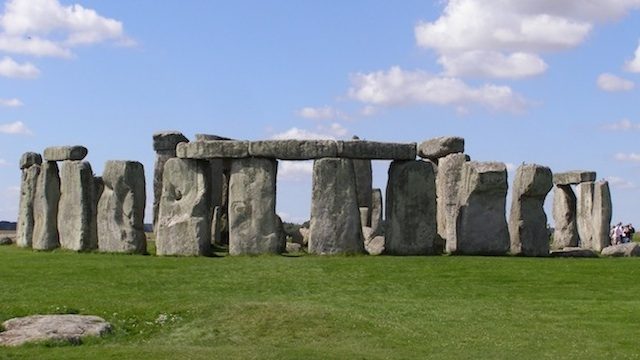SUMMARY
This is AI generated summarization, which may have errors. For context, always refer to the full article.

LONDON, United Kingdom – A vast, 4,500-year-old monument, thought to be one of the largest prehistoric structures found in Britain, has been discovered near Stonehenge in southwest England, archaeologists said Monday, June 22.
Some 20 or more massive shafts forming a circle – more than 10 meters in diameter and 5 meters deep – have been uncovered close to the ancient settlement of Durrington Walls, just 3 kilometers from Stonehenge.
Nick Snashall, National Trust archaeologist for the Stonehenge and Avebury World Heritage Site, called the latest find an “astonishing discovery.”
“As the place where the builders of Stonehenge lived and feasted, Durrington Walls is key to unlocking the story of the wider Stonehenge landscape, and this astonishing discovery offers us new insights into the lives and beliefs of our Neolithic ancestors,” she said in a statement.
It is thought the shafts may have served as a boundary to a sacred area connected to the mysterious circle of standing stones on Salisbury Plain.
The discovery was made by a team of archaeologists from various British universities – St Andrews, Birmingham, Warwick, Glasgow, and the University of Wales Trinity Saint David – using fieldwork and analysis.
The latest findings date back to the Neolithic period, an age associated with the first farmers in Britain, and marked by development of occasionally large structures, including Stonehenge.
Academics believe the shafts show that the early Britons had a counting system to track pacing across long distances.
Richard Bates, of the School of Environmental Sciences at the University of St Andrews, said the discovery “gives us a glimpse of the past which shows an even more complex society than we could ever imagine.” (READ: Stonehenge was ancient rave spot, new theory says)
The announcement came a day after the Summer Solstice – the longest day of the year – which is normally marked by thousands of people gathering at Stonehenge at sunrise.
The event was cancelled this year because of the coronavirus outbreak and was instead broadcast online.
English Heritage has provided access to the event since 2000, but warned visitors not to travel to the 3,000 BC Neolithic monument this year. – Rappler.com
Add a comment
How does this make you feel?
There are no comments yet. Add your comment to start the conversation.